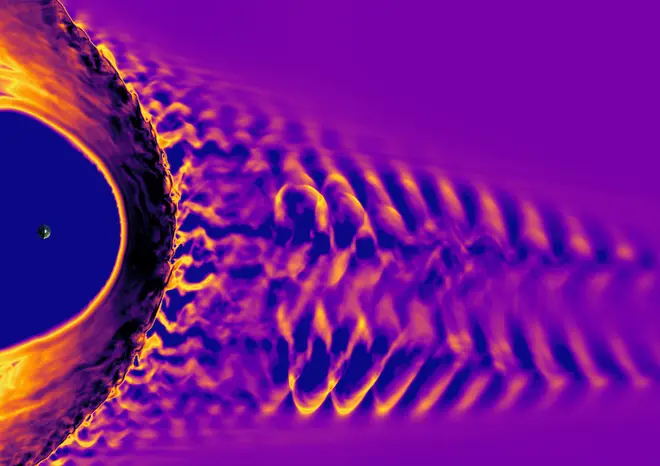On Air Now
Relaxing Evenings with Zeb Soanes 7pm - 10pm
20 November 2019, 17:36 | Updated: 28 November 2019, 15:51
Scientists have created a recording of the eerie ‘song’ that Earth sings when it is hit by a solar storm, and it sounds straight out of a sci-fi film.
When Earth is hit by a solar storm, it ‘sings’. The eerie song comes from waves that are generated in the Earth’s magnetic field when our planet is hit by a solar storm.
The storm is a major eruption of electrically charged particles in the Sun’s atmosphere. If these particles erupt on the Earth-facing side of the Sun, huge amounts of radiation can come hurtling our way.
Now, a team of scientists have managed to record the sound Earth makes when that happens.
Read more: Scientist shows reality of climate change using Baroque music >

The team, based at the University of Helsinki, Finland and led by former European Space Agency (ESA) research fellow Lucile Turc, used data from the ESA’s Cluster mission to produce the sounds.
They made the discovery while analysing data from the Cluster Science Archive.
Read more: 7 times classical music was inspired by space >
The Cluster mission comprises four satellites that orbit Earth in formation, investigating our planet’s magnetic environment and its interaction with solar wind – a stream of particles that come from the Sun.
During the obit, the cluster spacecraft repeatedly fly through the foreshock – the first region of our planet’s magnetic environment that solar wind particles encounter.
After analysing two decades of data, the team found that from 2001 to 2005, the spacecraft flew through six solar storms in the foreshock.
In the video above, you can hear the noise the magnetic waves made in the foreshock. The sounds, all low pitch and monotonous, were recorded by transforming the frequencies of the waves into audible signals.
“Our study reveals that solar storms profoundly modify the foreshock region,” says Lucile.
When the frequencies of the magnetic waves are turned into audible signals, they create a rather eerie song that reminds us more of the Doctor Who theme than a natural phenomenon.
When there’s no solar storm colliding into the Earth, its song is lower in pitch and less complex – just one single dominating frequency.
But when the storm hits, the frequency of the wave is doubled, and the wave itself breaks into a complex network of different, higher frequencies.
“We always expected a change in frequency but not the level of complexity in the wave,” Lucile said. “It’s like the storm is changing the tuning of the foreshock.”
The extraordinary videos show computer simulations of the foreshock, which demonstrate the intricate wave pattern that appears during solar storms.
They were all created using a model called Vlasiator, which is being developed at the University of Helsinki.
Credit: ESA/Cluster; L. Turc et al. (2019); Audio: Martin Archer, Queen Mary University of London, CC BY-SA 3.0 IGO